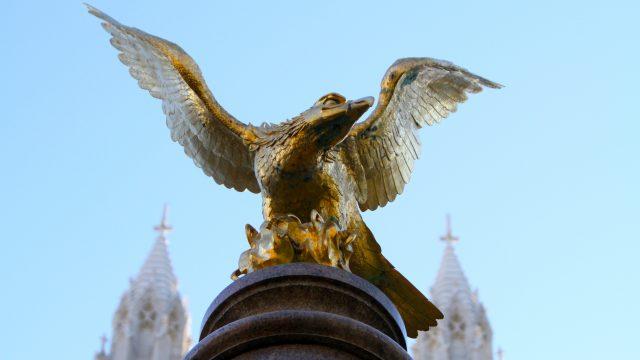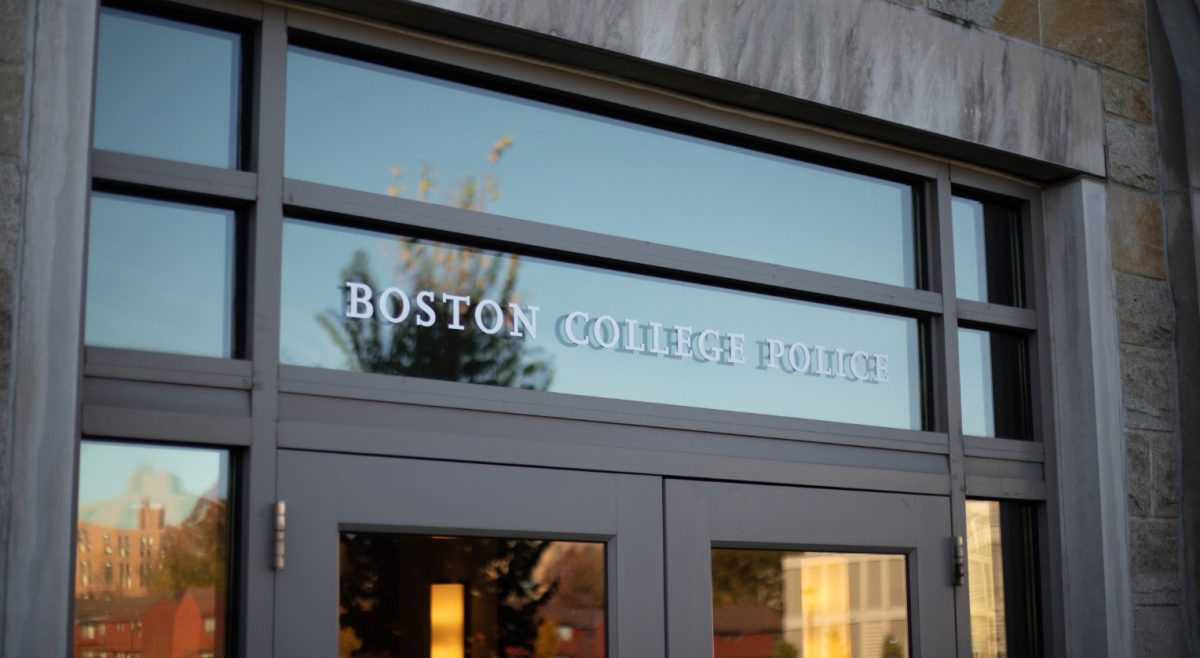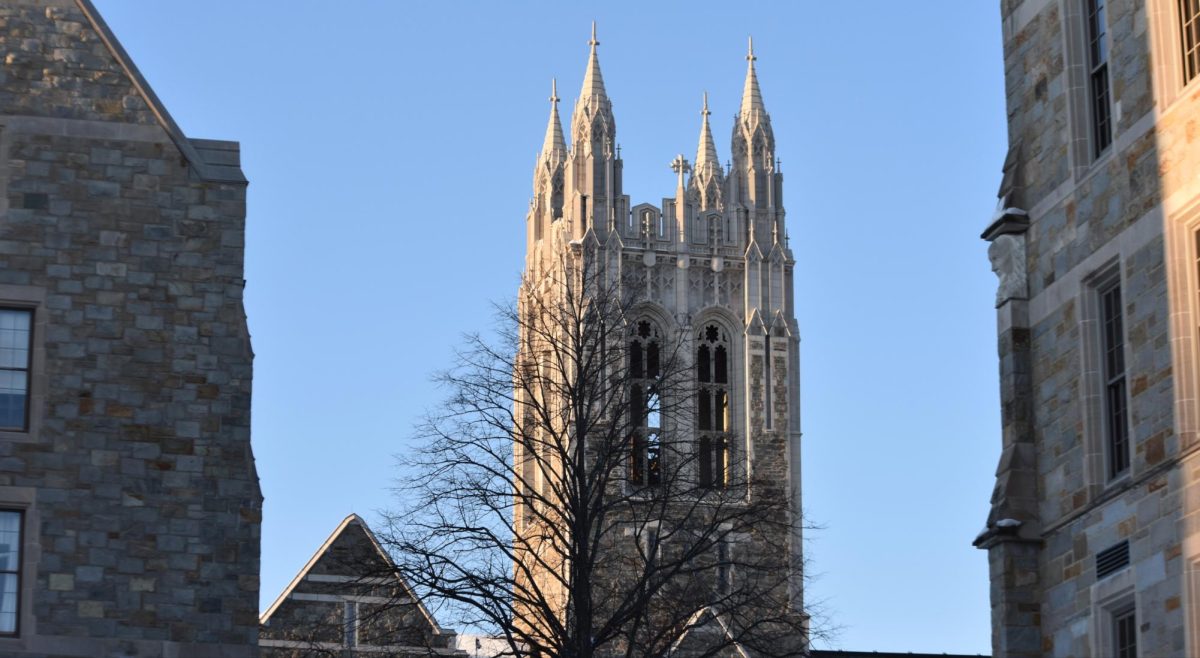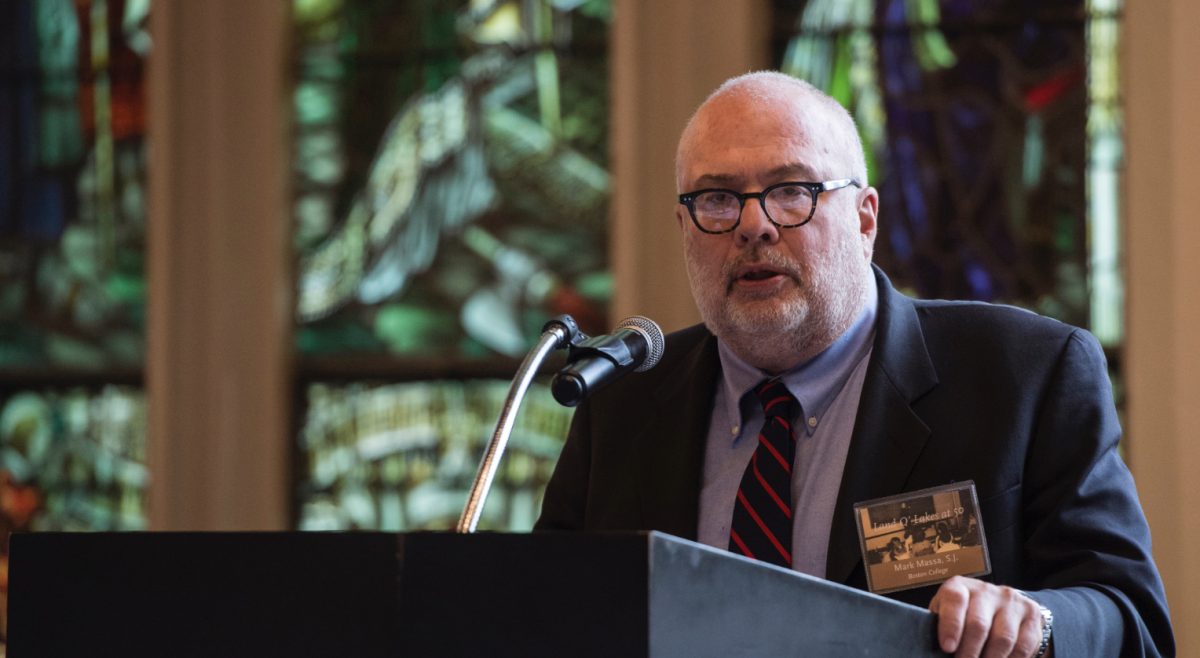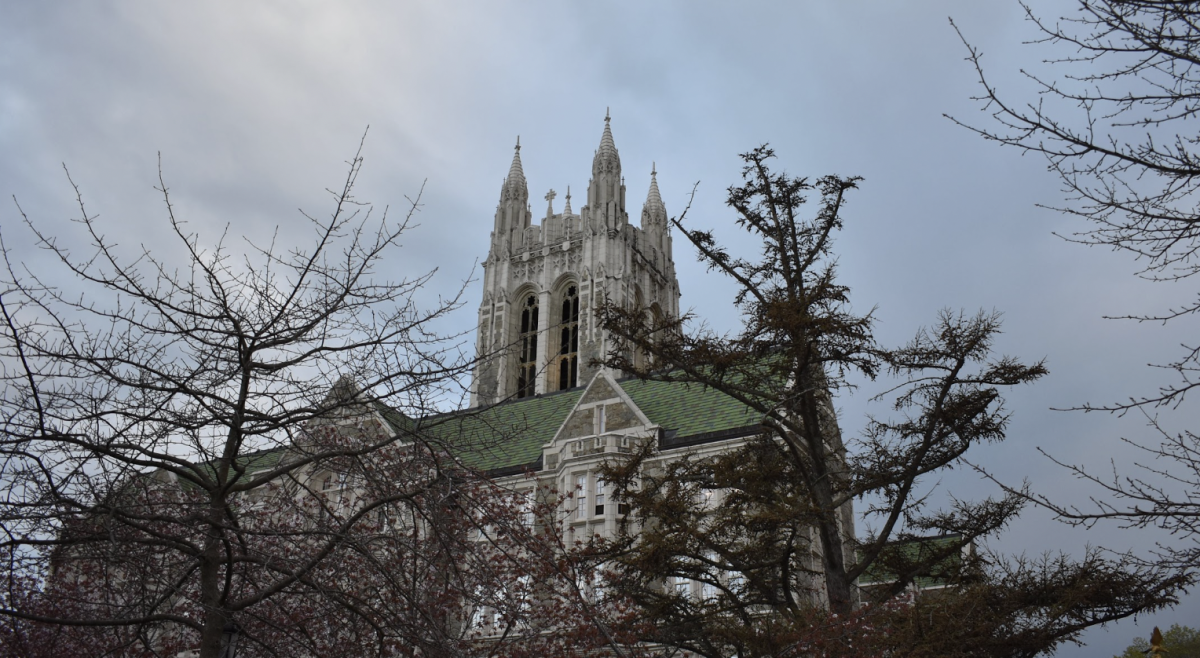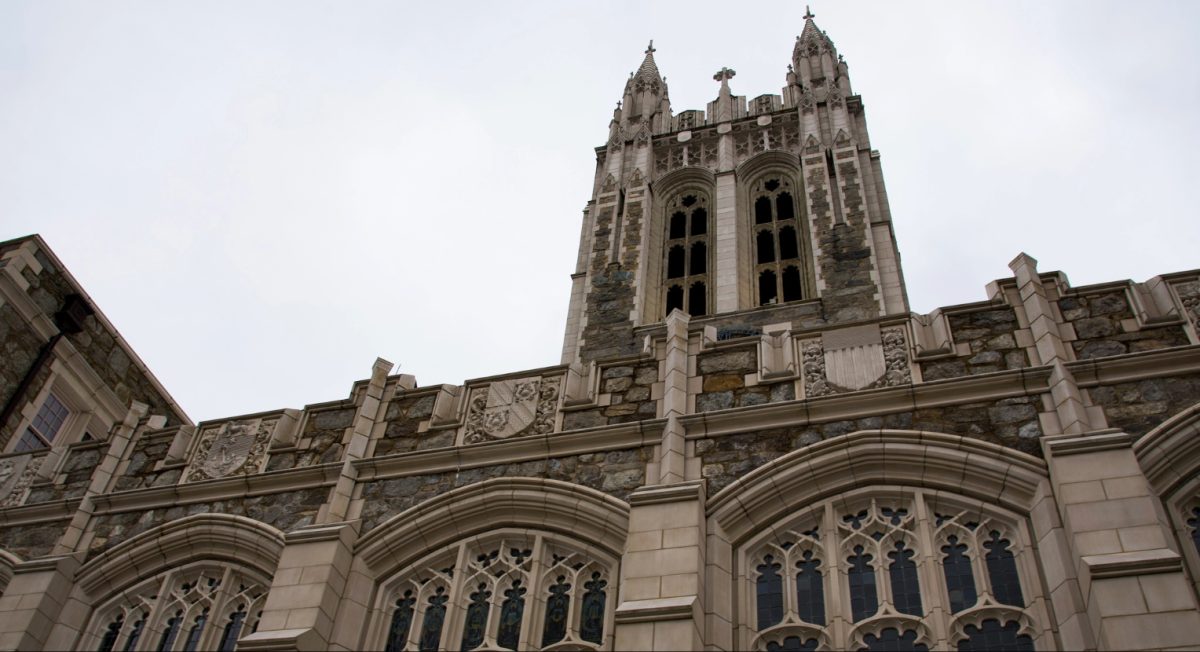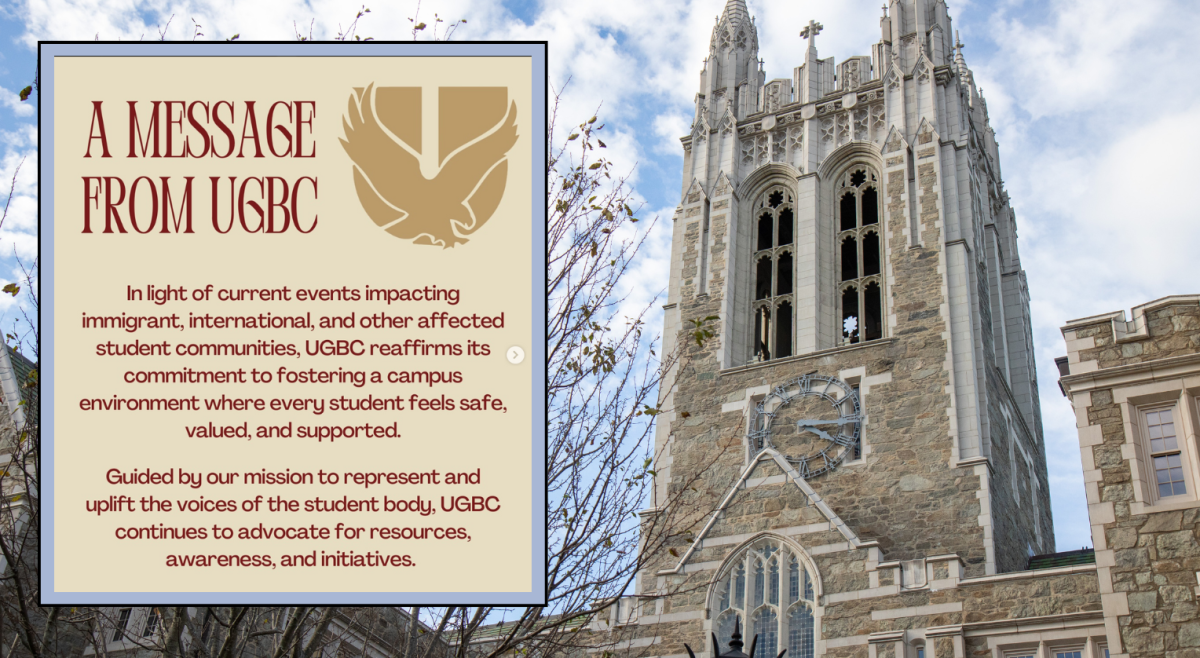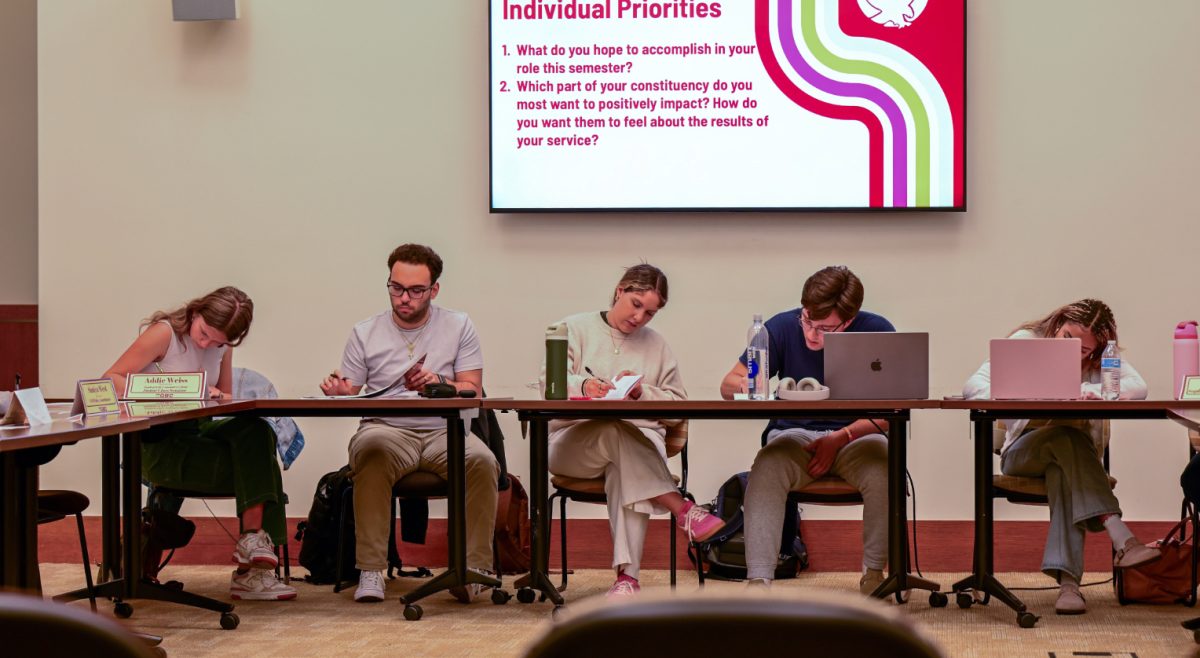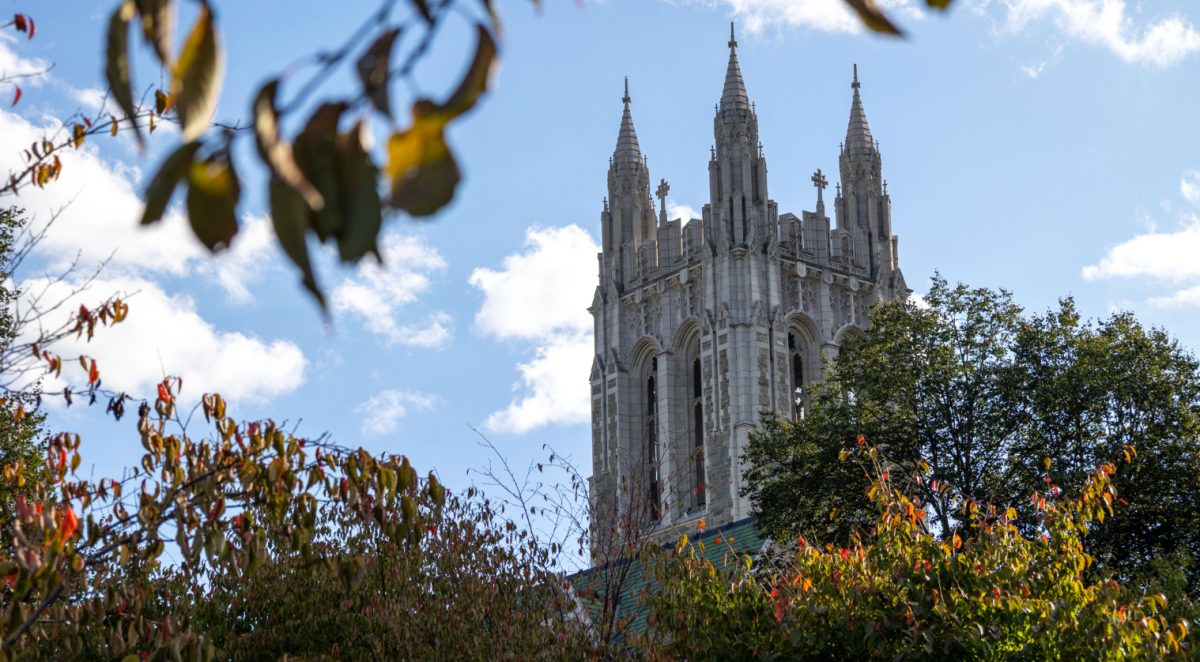The Division of Student Affairs announced this month that, starting Feb. 1, Hillside Cafe’s lounge area will stay open until midnight Monday through Thursday as “Hillside After Dark.” It’s part of an initiative to open up more spaces for student use as the University continues to plan for a student center. Meredith McCaffrey, Undergraduate Government of Boston College (UGBC) executive vice president and MCAS ’17, said the Hillside plan is a stand-in for the kind of use a student center would fill.
“We are so thrilled and honored to have the privilege of advocating for this project right now, but in a way the entire student body is being disserviced by the lack of a student center, and that will happen until one is built,” said Russell Simons, Undergraduate Government of Boston College president and MCAS ’17.
Simons hopes that projects like the Hillside Cafe hours extension will meet students needs and that students will eventually reap the benefits of a new student center.
UGBC has made the student center a priority this year, especially this semester. This year is a strategic planning year in which BC will lay out its goals for the next decade. Simons and McCaffrey feel that this is the time to really open up conversations around building a student center.
BC has reached the blueprint stage in building a student center at least twice, in 1995, then again in 2005. While the University has strongly considered constructing a student center, BC remains the only top-30 university without one. UGBC has been advocating for the construction of a student center be a top priority in the Strategic Plan.
A Heights article from 1986 stated that a student center was in its planning stages, with a goal to be completed in 1990.
According to a Heights article from 1995, after the renovation of Fulton Hall, the construction of a student center and renovations of Carney and McElroy were next on the docket. Even in 1995, the construction of a student center was “long-awaited.” According to Alfred Penino, the vice president of construction and planning at the time, construction drawings for the building were half finished, and the target date to start the project was set for June 1995. When June came around, the plans for the student center were being finalized, and construction was thought to begin that fall.
But according to a Heights article from the fall of 1996, BC ran into problems with the town of Newton, and faced delays in the permit-approval process. As a result, the project was postponed indefinitely. BC needed a special building permit from the Newton Board of Alderman in order to begin construction, but ran into some problems with scheduling times to meet with the board.
“A broader Middle Campus plan met with substantial opposition over 20 years ago,” Provost and Dean of Faculties David Quigley said in an email.
The project was again taken up in 2005 and reached blueprint stages, but ultimately did not proceed.
A student center would provide students with a space to meet, to study, a space for programming, and a more centralized place to advertise events and initiatives, McCaffrey said. To address some of these needs, the Division of Student Affairs has been trying to open up more spaces on campus for students to use.
Quigley and Executive Vice President Michael Lochhead have been co-chairs of the University Strategic Planning Initiative for the past 13 months.
“The Board of Trustees will review our emerging ideas later this year, and authority to approve the strategic plan lies with the Board,” Quigley said in an email. “There are a number of facilities that are being discussed as part of this process. As with the last several planning processes for the University, approval of a plan will give way to a decade or more of implementation.”
Many comparable universities across the nation have student centers that serve as a hub for student life. Georgetown University, with an undergraduate population of 7,540, has two student centers—the Leavey Center and the Healey Family Student Center. The Leavey Center, built in 1988, provides recreational and meeting places for students, faculty, and staff. It also houses a 146-room hotel, conference centers, and various eating facilities. The Healey Family Student Center (HFSC) opened in September 2014 and is meant to serve as the “living room” of the campus. The HFSC includes many lounge areas, dance studios, music practice rooms, film-screening classrooms, the Campus Information Services Center, and a full-service campus restaurant and bar.
Notre Dame’s Lafortune Student Center became a student center in the 1950s, and provides students, faculty, and staff with meeting rooms, a convenience store, restaurant eateries, and space for students to meet and work. The center also houses four offices within Notre Dame’s Division of Student Affairs. There are plans to build a second student center, the Duncan Student Center, with the expected finish date set at Dec.1 of this year.
Boston University has two student centers as well— the George Sherman Union and the Yawkey Center for Student Services. The George Sherman Union was built in 1963, and provides students, faculty, staff, and BU alumni meeting spaces, several auditoriums, two bank branches, many of BU’s administrative offices, a nine-restaurant food court, and a ten lane bowling alley. The Yawkey Center for Student Services includes state of the art dining services, and will house BU’s career services and the Educational Resource Center (ERC). The ERC offers tutoring, language group discussion, and writing and reading discussions.
Last September, Simons and McCaffrey presented the idea for a student center to the Board of Trustees. And last fall, UGBC passed a resolution affirming their commitment to building a student center, as well as encouraging the Board to prioritize it.
“I think it’s a question of where in the next 10 years does this project fall in the University’s priorities,” Simons said. “It’s not that people aren’t warm and receptive to the idea, it’s just a matter of when can we feasibly get this done.”
According to Vice President for Student Affairs Barbara Jones, the site for the future student center is where the Flynn Recreation Complex currently stands. The new athletic center will be built where Edmond’s Hall used to be. While a student center is part of the current campus master plan, there are a series of construction projects that need to take place before the Plex can be torn down to make space for a student center.
“There’s not anyone who says we don’t need it, it’s more about what the best avenue to get there, and what needs to be done before we can build the center, and people have different opinions about what to do first,” McCaffrey said.
Featured Image by Alex Gaynor / Heights Staff

